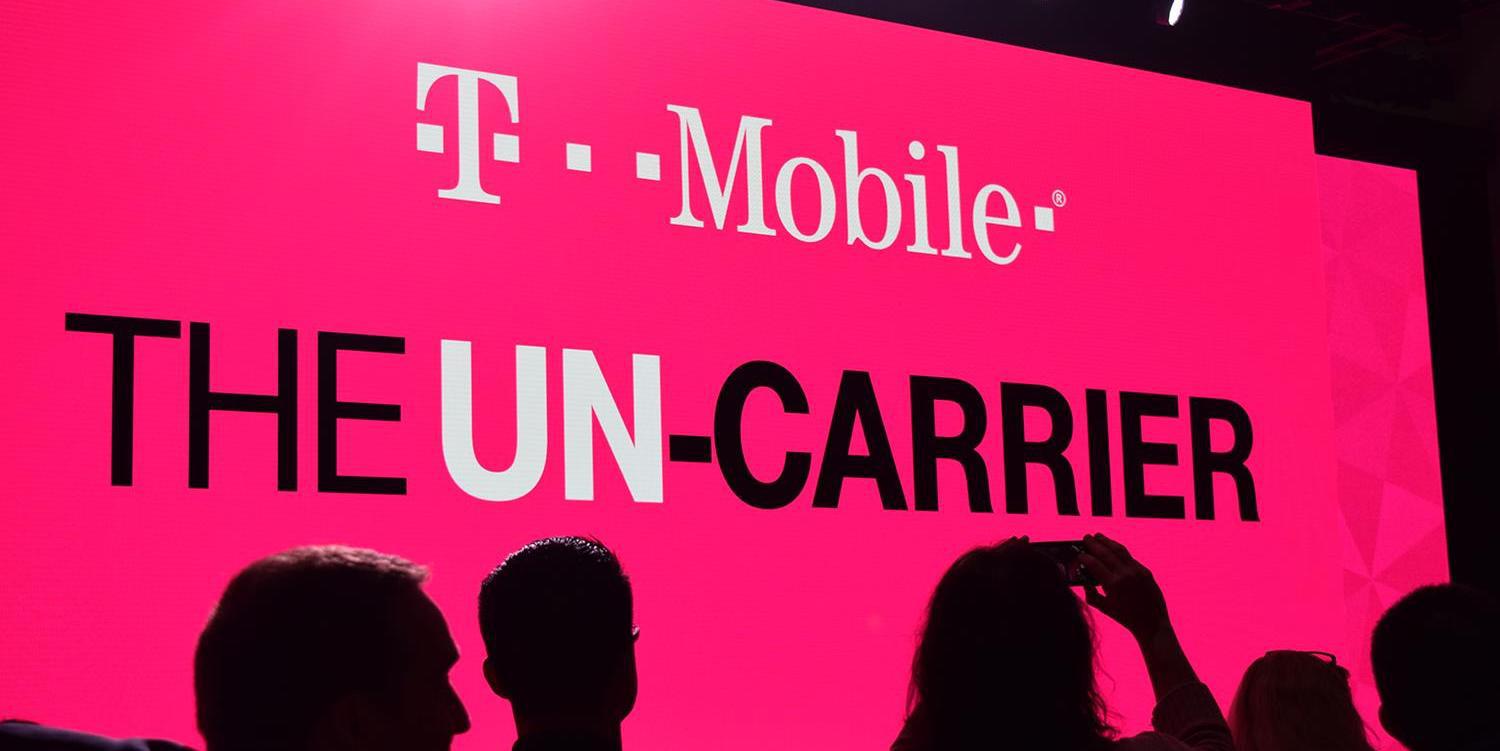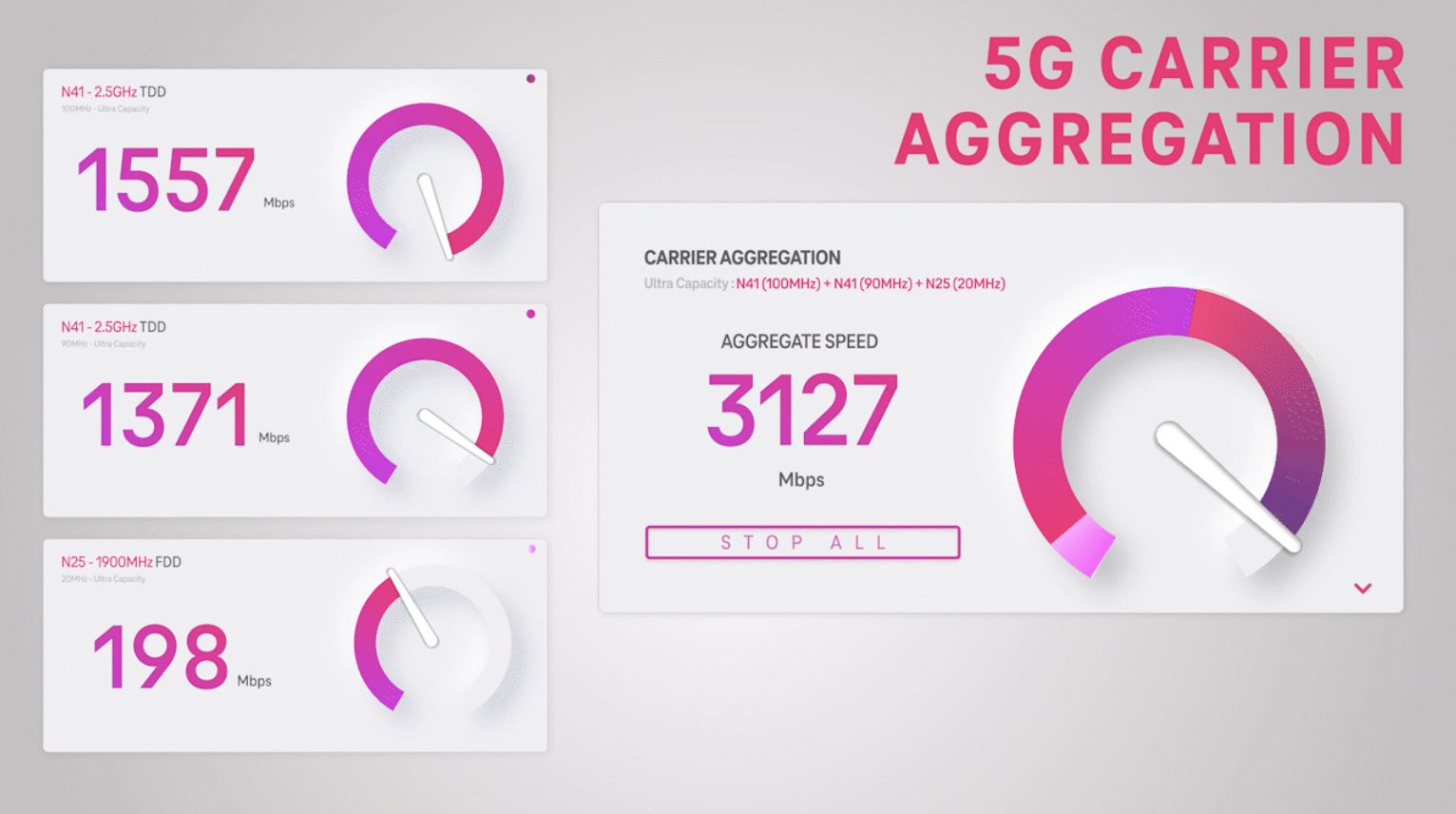
T-Mobile is looking to break the conception that gigabit 5G speeds require the difficult to deploy mmWave spectrum. In what the company says is a “global first” it has successfully reached 3 Gbps speeds with a Samsung Galaxy S22 in a production network test.
As 5G entered the mainstream over the last few years, one of the exciting ideas has been gigabit speeds for mobile devices. However, 1-2 gigabit speeds in the real world are limited to small areas where users have access to the special mmWave flavor of 5G coverage. Now T-Mobile is looking to shake things up with an innovation that offers speeds of up to 3 Gbps from aggregating mid-band 5G spectrum.
T-Mobile shared the news in a press release today that in a partnership with Ericsson, Nokia, Samsung, and Qualcomm, 5G Carrier Aggregation (NR CA) was used to achieve the blazing-fast speeds over 3 Gbps. Here’s how T-Mobile describes the technique of combining 5G mid-band channels:
“Simply stated, 5G Carrier Aggregation (NR CA) allows T-Mobile to combine multiple 5G channels (or carriers) to deliver greater speed and performance. In this test, the Un-carrier merged three 5G channels – two channels of 2.5 GHz Ultra Capacity 5G and one channel of 1900 MHz spectrum – creating an effective 210 MHz 5G channel. That’s all mid-band spectrum, by the way. And over 3 Gbps of speed!”

T-Mobile says that the successful production test was only made possible thanks to its standalone 5G architecture – which it was the first to launch.
“NR CA is live in parts of T-Mobile’s network today, combining two 2.5 GHz 5G channels for greater speeds, performance and capacity. Customers with the Samsung Galaxy S22 will be among the first to experience a third 1900 MHz 5G channel later this year. This capability will expand across the Un-carrier’s network and to additional devices in the near future.”
T-Mobile didn’t share an estimate for when gigabit speeds will be rolling out more broadly across its network via 5G Carrier Aggregation but it did say that it expects Ultra Capacity 5G (5G UC) to be available for 260 million users this year and 300 million in 2023.
9to5Mac’s Take
T-Mobile noting that the Samsung Galaxy S22 with Qualcomm’s Snapdragon X65 modem will be “among the first” to experience the benefits of carrier aggregation hints that this advancement will be hardware limited.
Currently, the iPhone 13 lineup uses a custom version of Qualcomm’s X60 modem. While Apple is working on shifting to creating its own modems as early as 2023, the iPhone 14 lineup could feature the X65 that would enable access to improved speeds with 5G Carrier Aggregation.
As far as speeds go, I wouldn’t expect gigabit performance to be widely available soon, but with T-Mobile taking the lead in 5G deployment, particularly with mid-band spectrum, it could be in a strong position to deliver notable improvements in the years ahead.
FTC: We use income earning auto affiliate links. More.






Comments